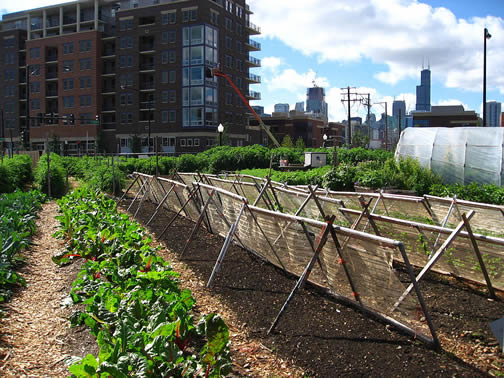| << Chapter < Page | Chapter >> Page > |
Working together, local government and project planners could also retrofit older urban streets with attractive walkable streetscapes, just as Lansing, Michigan has done as part of its combined sewer overflow project Newport, Robert, USEPA lecture to UPP 594 class 9/7/10 (below).
Some visionaries see even more dramatic transformations in the way we deal with water. Sarah Dunn and Martin Felsen of Urbanlab envision Chicago’s evolution into a model city for “ growing water ” by creating a series of Eco-Boulevards that function as a giant Living Machine – treating the city’s waste and storm water naturally, using micro-organisms, small invertebrates such as snails, fish, and plants. Under their plan treated water would be returned to the Great Lakes Basin and create a closed water loop within Chicago, instead of being exported to the Mississippi and Gulf Coast.
The ancients would wonder at modern supermarkets with their food from all over the world and fresh fruits and vegetables all year round. Yet most environmental activists advocate locally produced organic food. Peak oil will raise petrochemical costs and upset the dynamics of modern agriculture, but it will be difficult to change the acquired tastes of the consuming public.
USEPA is encouraging urban agriculture as one of the solutions to the shrinking city.
http://www.epa.gov/brownfields/urbanag/index.html accessed 4/25/11
http://healthfreedoms.org/2011/03/10/food-crisis-triumph-part-2-victory-gardens/ accessed 4/25/11

Many of us might belong to food cooperatives where the members contract with organic farmers to purchase the food grown for them.
(External Link) accessed 4/25/11

Notification Switch
Would you like to follow the 'Sustainability: a comprehensive foundation' conversation and receive update notifications?